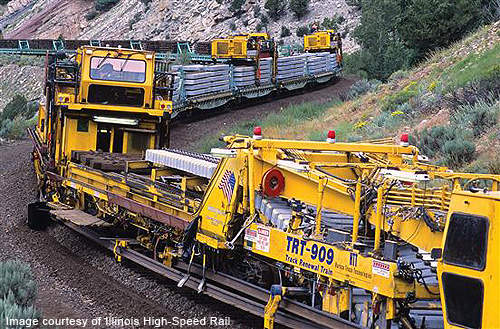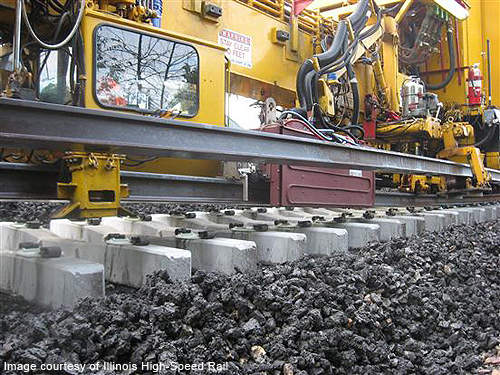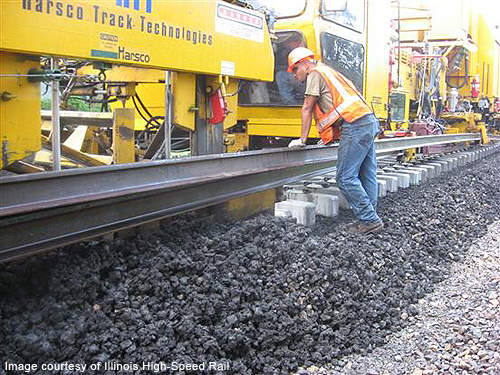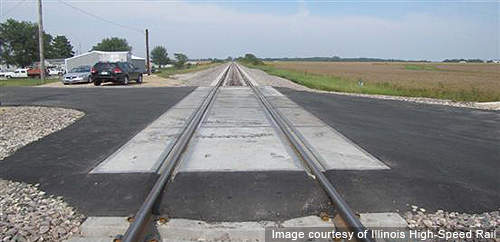The Illinois High Speed Rail (HSR) Project is a track development, implementation and operation programme to convert the existing 450km route between Chicago and St. Louis into a high speed rail service line. The corridor is used for both passenger and freight rail services. It is owned by Union Pacific Railroad and operated by Amtrak.
The Chicago-St. Louis line is currently serviced by Lincoln Service trains operating at a top speed of 127km/h. The HSR project intends to increase the train speed to 177km/h while improving the infrastructure including the rolling stock.
Every year approximately 35 million trips are made between the two cities. Of these, 99% trips are by road and air travel, causing congestion and environmental hazard to the surroundings. The Illinois HSR project intends to distribute the transportation network by diverting these trips from the existing network while reducing the rail travel time from five and a half hours to four hours.
The project is headed by the Illinois Department of Transport (IDOT) and the Federal Railroad Administration (FRA). Project management services are being provided by a team led by PB Americas.
Project background
The first study for a new HSR between Chicago and St. Louis was conducted in 1979. It was tested on a system consisting of a new electrified, double-tracked rail to operate at top speed of 240km/h. It was estimated to cost $2.2bn (1994 estimates).
However, due to the huge cost element involved in the project, the IDOT found it more feasible to improve the existing passenger services rather than build a new rail alignment. A feasibility study conducted during 1992-1994 concluded that diesel-powered trains operating at a speed of 180km/h-200km/h would be viable from both ridership and financial perspective.
The project’s commercial feasibility was concluded in August 1996, two years after documenting the feasibility findings in Chicago-St. Louis HSR Financial and Implementation Plan (1994).
The final environmental impact statement was approved in January 2003 by the Federal Highway Administration (FHWA), FRA and IDOT.
Lines and routes
The Chicago-St. Louis Corridor runs in the north-south direction. It begins from Chicago in the north and traverses through Summit, Joliet, Dwight, Pontiac, Bloomington-Normal, Lincoln, Springfield, Carlinville and Alton before terminating at St. Louis in the south.
Project details
The project will provide end-to-end service with three round trips a day. It will save 1.3 million miles a year along with 83,500 gallons of fuel.
New anti-collision technology known as Positive Train Control (PTC) will be implemented on the corridor.
The track improvement programme is being carried out in two phases. Phase I began in September 2010 and was completed by December 2010. It involved upgrading the existing 76.5 miles of rail track from Brighton (between Alton and Carlinville) to Elkhart (between Springfield and Lincoln) excluding Springfield. Determination of the best route through Springfield is currently being studied.
Phase II commenced in April 2011 after the signing of a partnership agreement between the Union Pacific Railroad and the federal government to create jobs through the corridor project. The agreement requires Union Pacific to run five round trips per day once the phase becomes fully operational.
Phase II includes upgrading of 96 miles of the existing track from Elkhart to Dwight, which is expected to be completed by the third quarter of 2011.
The first 20 mile section between Dwight and Pontiac is scheduled for 2012 opening and the section between Alton and Pontiac for 2012-2013 opening.
Environmental impact study on the Chicago-Dwight section is expected to be completed by the end of 2011. Timelines for the completion of this section will be announced based on the conclusions of the study.
Trains will operate at a top speed of 177km/h to the south of Dwight while maintaining the existing speed of 127km/h in north of Dwight.
Rolling stock
A total of six new seven-car sets will be procured to service the new HSR line. The passenger services will be provided by Lincoln trains until the new diesel trains are procured.
The contract for the new rolling stock is expected to be awarded by the end of 2011.
Construction
The project will require construction of 20km of double track, 35km of freight siding, one grade-separated highway-railroad crossing, installation of enhanced warning devices at 174 grade crossings and upgrading of 172 miles of existing track.
The tracks are being renewed using state-of-the art track renewal train (TRT) machinery. The TRT machinery is also being used for the installation of new concrete ties and other track components.
Phase II construction will involve use of 23,000t of rail material and installation of 250,000 new concrete ties.
Finance
The project is the first to break-ground in the Midwest since the states of Ohio and Wisconsin rejected the federal funding for HSR projects.
The state of Illinois received a federal grant of $1.1bn towards the project in 2010. Approximately $900m was used towards the track improvement in Phase I and the rest is set aside for procuring new rolling stock.
Additional federal funding amounting to $1.2bn was announced in March 2011 to begin construction of Phase II.
The state of Illinois has contributed $42m towards the passenger rail expansion programme.
Future
The ambitious project is expected to cut the travel time to two hours assuming a speed of 220mph. Plan is also in place to build a bullet train along the Chicago-St. Louis corridor in the long-term.











